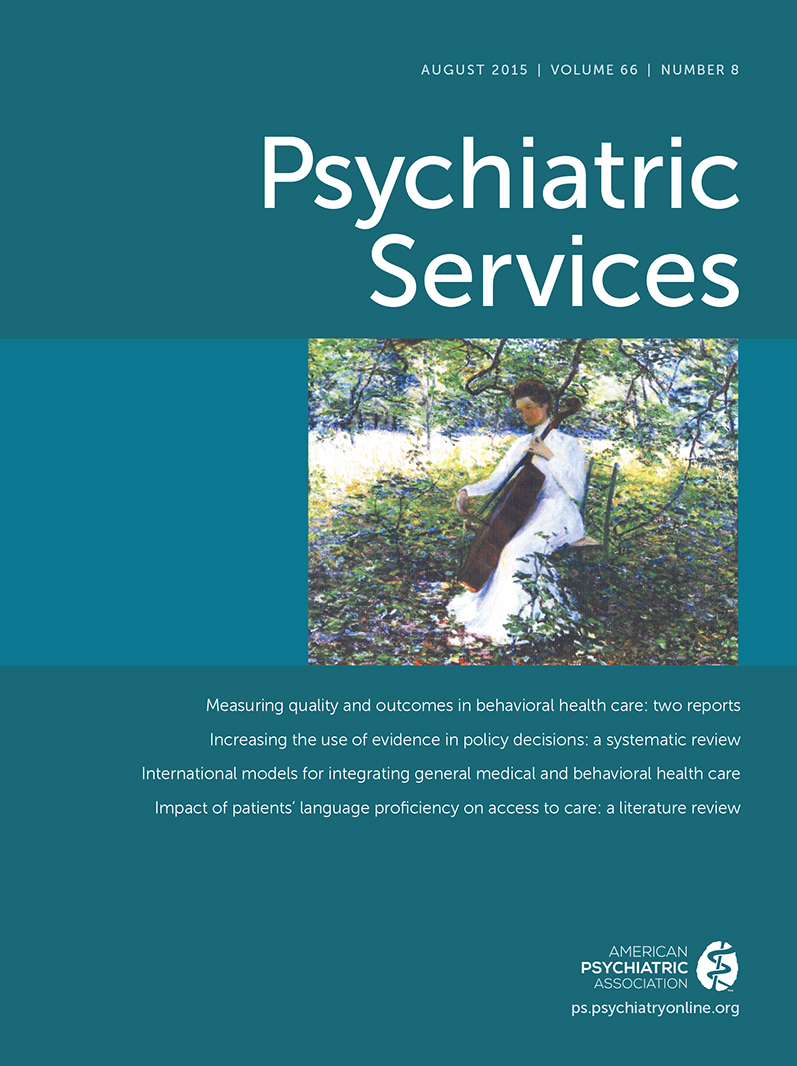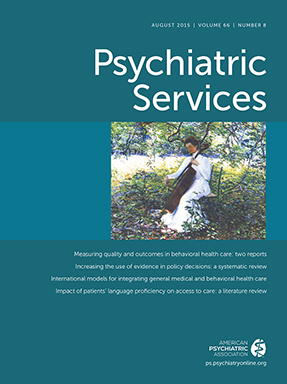Housing Programs for Homeless Individuals With Mental Illness: Effects on Housing and Mental Health Outcomes
Abstract
Objective:
Methods:
Results:
Conclusions:
Methods
Results
Discussion
Sampling and Selection Bias
| Study | Sample sizeb | Male | Age (years) | Psychotic disorders | Substance use | Experimental vs. control group outcome | ||
|---|---|---|---|---|---|---|---|---|
| Housing | Clinical | Case management | ||||||
| Lipton et al., 1988 (33) | 49 | Experimental, unknown; control, not reported | Experimental, unknown; control, not reported | Experimental, unknown; control, not reported | Experimental, unknown; control, not reported | More housed by end of study | Housing not associated with reduction in psychiatric symptoms | |
| Goldfinger et al., 1999 (35) | 118 | Experimental, 72%; control, 41% | M=38 | 62% | 50% | More housed by end of study | ||
| McHugo et al., 2004 (8) | 121 | Experimental, 8%; control, 83% | M=40 | 73% | 31%–54%c | More housed by end of study | Continuum housing associated with reduction in psychiatric symptoms; no change in substance use across groupsd | |
| Siegel et al., 2006 (28)e | 139 | Experimental, 57%–72%; control, 26%–54% | 35–48 | Experimental, unknown; control, not reported | Experimental, unknown; control, not reported | Similar number housed by end of study | ||
| Clark and Rich, 2003 (30) | 152 | Experimental, 52%; control, 20% | M=38 | Experimental, unknown; control, not reported | Experimental, unknown; control, not reported | Greater number with severe psychiatric symptoms housed; fewer with less severe psychiatric symptoms housed | ||
| Padgett et al., 2006 (37) | 173 | Experimental, 77%; control, 40% | M=42 | 90% | No difference in substance use | |||
| Greenwood et al., 2005 (31) | 197 | Experimental, 76%; control, 29% | M=42 | 54% | Experimental, unknown; control, not reported | Greater proportion of time housed | Similar reduction in psychiatric symptoms across groups | |
| Tsemberis et al., 2004 (32) | 206 | Experimental, 79%; control, 41% | 59% were between ages 31 and 50 | 53% | 90% | Greater proportion of time housed | Housing not associated with reduction in psychiatric symptoms or substance use | |
| Hurlburt et al., 1996 (29) | 361 | Experimental, 67%; control, 63% | 42% were between ages 30 and 39 | 55% | 53% | More living in independent housing, but experimental condition did not reduce homelessness | Case management not associated with positive housing outcome | |
| Gilmer et al., 2010 (17) | 363 | Experimental, 56%; control, 25% | M=44 | 60% | Experimental, unknown; control, not reported | Fewer days homeless and more days housed | ||
| Rosenheck et al., 2003 (7) | 460 | Experimental, 96%; control, not reported | M=42 | Experimental, unknown; control, not reported | 50% | More days housed | Housing not associated with reduction in psychiatric symptoms | Case management not associated with positive housing outcome |
| Cheng et al., 2007 (36) | 460 | Experimental, 96%; control, not reported | M=42 | Experimental, unknown; control, not reported | 50% | More days housed | Housing associated with reduction in substance use | |
| Tsemberis and Eisenberg, 2000 (34)f | 1,841 | Experimental, 67%; control, 73% | M=41 | Experimental, 60%; control, 46% | Experimental, 58%; control, 49% | More housed by end of study | ||
| Tsemberis, 1999 (13)g | 3,950 | Experimental, 74%; control, 66% | Experimental, 58% were between ages 30 and 49; control, 69% were between ages 30 and 49 | Experimental, 59%; control, 55% | Experimental, 62%; control, 49% | More housed by end of study | ||
Attrition
| Attrition rate and study | Study period | Experimental group or group hypothesized to outperform comparison group (%)b | Control group or group hypothesized to underperform experimental group (%)c | Average attrition across experimental and control groups |
|---|---|---|---|---|
| 0%–29% (medium or high statistical power) | ||||
| McHugo et al., 2004 (8) | 18 months | 15 | 32 | 24 |
| Goldfinger et al., 1999 (35) | 3 years | 23 | 24 | 24 |
| Tsemberis, 1999 (13) | 3 years | 16 | 40 | 28 |
| 30%–49% (low or medium statistical power) | ||||
| Tsemberis and Eisenberg, 2000 (34) | 5 years | 12 | 53 | 33 |
| Siegel et al., 2006 (28) | 18 months | 28 | 46 | 37 |
| Rosenheck et al., 2003 (7) | 3 years | 23 | 52 | 38 |
| Clark and Rich, 2003 (30) | 1 year | 24 | 64 | 44 |
| ≥50% (very low statistical power) | ||||
| Lipton et al., 1988 (33) | 1 year | 31 | 70 | 51 |
| Hurlburt et al., 1996 (29) | 3 years | 42 | 70 | 56 |
Response Bias
Design and Implementation of Housing and Support Services
Randomization and Control Group Design
Conclusions
Footnote
References
Information & Authors
Information
Published In
History
Authors
Funding Information
Metrics & Citations
Metrics
Citations
Export Citations
If you have the appropriate software installed, you can download article citation data to the citation manager of your choice. Simply select your manager software from the list below and click Download.
For more information or tips please see 'Downloading to a citation manager' in the Help menu.
View Options
View options
PDF/EPUB
View PDF/EPUBLogin options
Already a subscriber? Access your subscription through your login credentials or your institution for full access to this article.
Personal login Institutional Login Open Athens loginNot a subscriber?
PsychiatryOnline subscription options offer access to the DSM-5-TR® library, books, journals, CME, and patient resources. This all-in-one virtual library provides psychiatrists and mental health professionals with key resources for diagnosis, treatment, research, and professional development.
Need more help? PsychiatryOnline Customer Service may be reached by emailing [email protected] or by calling 800-368-5777 (in the U.S.) or 703-907-7322 (outside the U.S.).

